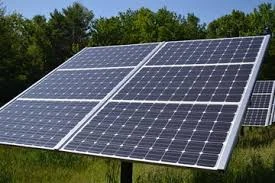bifacial vs monofacial solar panel
Bifacial vs Monofacial Solar Panels Which is Right for You?
As the demand for renewable energy continues to rise, solar power has become a popular choice for individuals and businesses looking to reduce their carbon footprint and save on electricity costs. When considering a solar installation, one of the most critical decisions is choosing the type of solar panel to use. Two primary types of solar panels are bifacial and monofacial panels, each with its distinct advantages and disadvantages.
Understanding Monofacial Solar Panels
Monofacial solar panels are the traditional type of solar technology, featuring photovoltaic (PV) cells that absorb sunlight on one side. These panels are commonly installed in residential and commercial applications and are known for their efficiency and reliability. They typically have a strong performance record, with most monofacial panels converting about 15% to 22% of sunlight into electricity.
One of the main advantages of monofacial panels is their lower initial cost. They are the most widely manufactured type of solar panel, which keeps prices competitive. Additionally, installation is straightforward, requiring standard mounting systems that do not necessitate additional considerations for light capture from below.
However, the main limitation of monofacial panels is their dependency on direct sunlight. While they can still produce energy on cloudy days, their efficiency depends heavily on the angle and intensity of the sunlight received directly. This makes them less effective in certain environments or for installations where shadows are a concern.
The Rise of Bifacial Solar Panels
bifacial vs monofacial solar panel

Bifacial solar panels, on the other hand, are designed to capture sunlight on both sides of the panel. This dual-sided technology allows them to harness solar energy reflected off the ground or nearby surfaces. Bifacial panels can increase energy production by 10% to 20% compared to standard monofacial panels, depending on the installation environment and conditions.
The benefits of bifacial solar panels are particularly pronounced in areas with high albedo surfaces, such as deserts, snow-covered regions, or reflective rooftops. They are often installed on elevated structures or with tilt angles that minimize shading from obstructions, maximizing the potential for light capture.
Despite their higher efficiency and energy yield, bifacial panels come with a higher upfront cost due to their advanced technology and manufacturing processes. Additionally, their installation can be more complex, requiring careful consideration of placement, tilt, and surrounding environment to optimize performance.
Choosing the Right Option for Your Needs
When deciding between bifacial and monofacial solar panels, consider factors such as budget, installation location, and energy needs. If you are seeking an economical option and have limited roof space, monofacial panels may be a practical choice. However, if you have the ability to invest upfront and your installation site is conducive to capturing reflected light, bifacial panels might offer better long-term value and efficiency.
Ultimately, both bifacial and monofacial solar panels have their unique strengths and can contribute to a sustainable energy future. It is essential to evaluate your specific energy goals, site conditions, and budget to determine which technology aligns best with your solar ambitions. Consulting with solar energy professionals can also aid in making a well-informed decision tailored to your individual circumstances.
-
Unlocking Energy Freedom with the Off Grid Solar InverterNewsJun.06,2025
-
Unlock More Solar Power with a High-Efficiency Bifacial Solar PanelNewsJun.06,2025
-
Power Your Future with High-Efficiency Monocrystalline Solar PanelsNewsJun.06,2025
-
Next-Gen Solar Power Starts with Micro Solar InvertersNewsJun.06,2025
-
Harnessing Peak Efficiency with the On Grid Solar InverterNewsJun.06,2025
-
Discover Unmatched Efficiency with the Latest String Solar InverterNewsJun.06,2025







